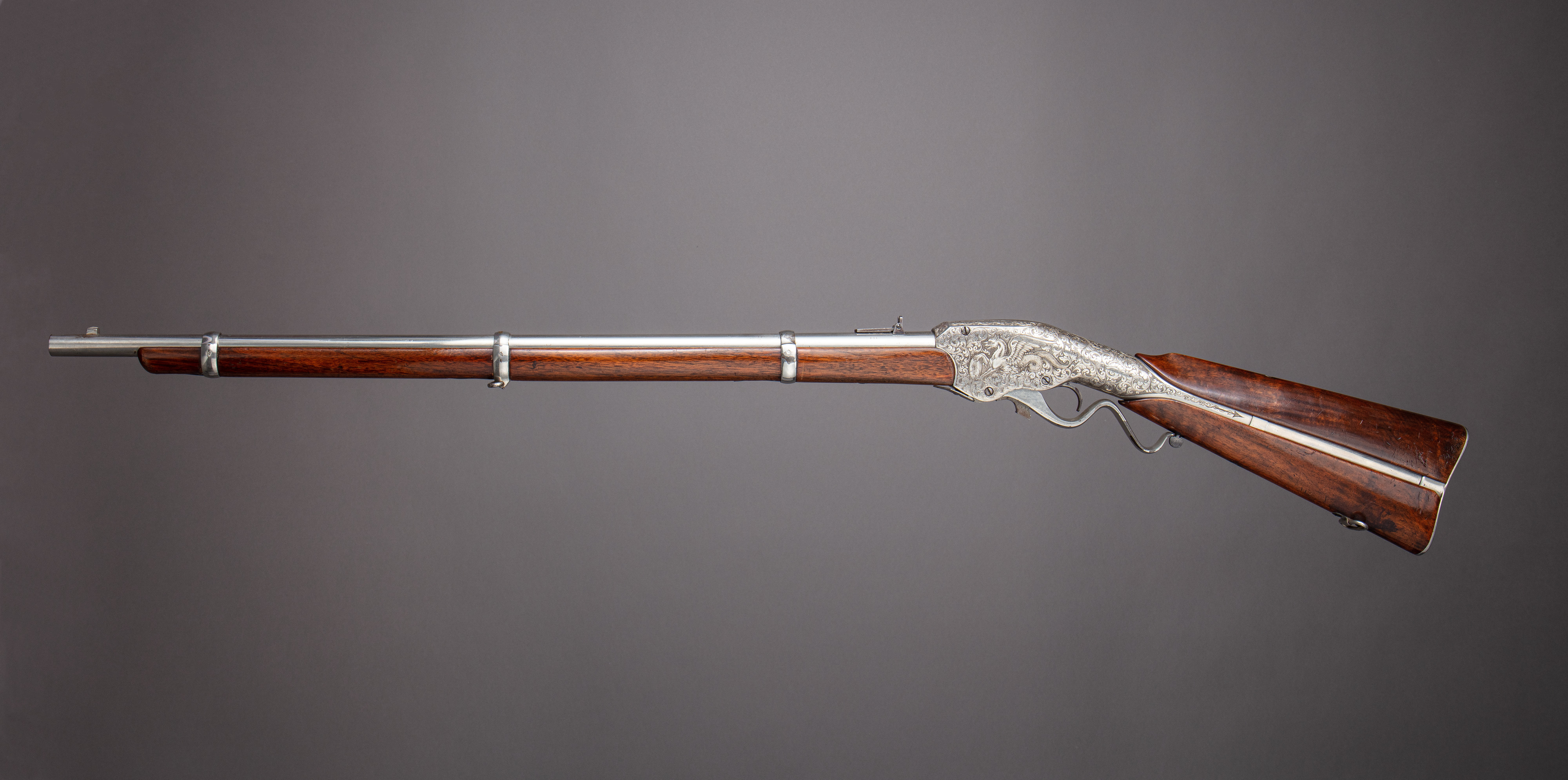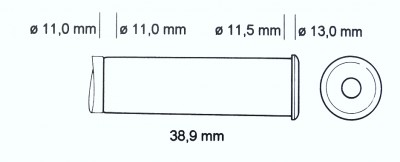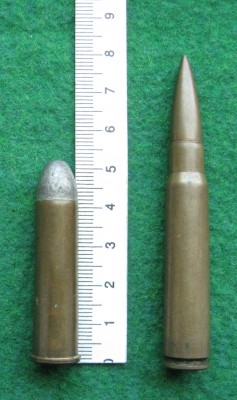44 Evans Long
Black powder American hunting cartridge from 1877, now completely obsolete. The cartridge has no bottom markings, on the right is a 7.92 x 57 round.
Source: A. Andersen, V. Andresen, T. Stromstad “Cartridge Cases” by own circulation, Norway 1995.
URL : 44 Evans Long : Puškové palcovéVersion : 0
The Evans repeating rifle is often considered to be one of the oddest rifles to ever be produced in the United States. The Evans was invented by Warren R. Evans, a dentist from Thomaston, Maine. With the help of his brother George, they perfected the rifle and started the “Evans Rifle Manufacturing Company” of Mechanic Falls, Maine in 1873. Their rifles were marketed by Merwin & Hulbert, who also invested into the company. The hope was that the rifle would be issued by the United States Army, but the rifle failed the standard dust test.[3]
It was then offered as a sporting rifle. The rifle has a radial block receiver similar to the Spencer, but the rounds were fed from an Archimedean-screw magazine which formed the spine of the rifle stock and could hold up to 28 rounds. The fluted cartridge carrier made a quarter turn each time the lever was operated, feeding a new cartridge into the breech.

Rotary helical Evans magazine
The round was unique to the rifle and hard to find. The mechanism of the rifle was not very sturdy and did not do well with such things as dust. The Evans Rifle Manufacturing Company went bankrupt in December 1879, a victim of the post war arms glut and keen competition.
A total of almost 15,000 Evans repeating rifles were produced between 1873 and 1879.[3] A good portion of these survive, and a number are advertised in various antique arms publications. The rifle was the only firearm mass-produced in the state of Maine in the 19th century. The Evans rifle also had the greatest magazine capacity of any rifle mass-produced in the 19th century. 





